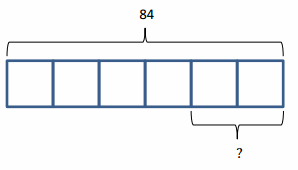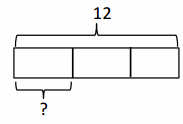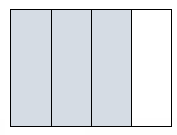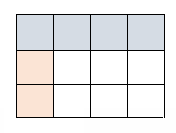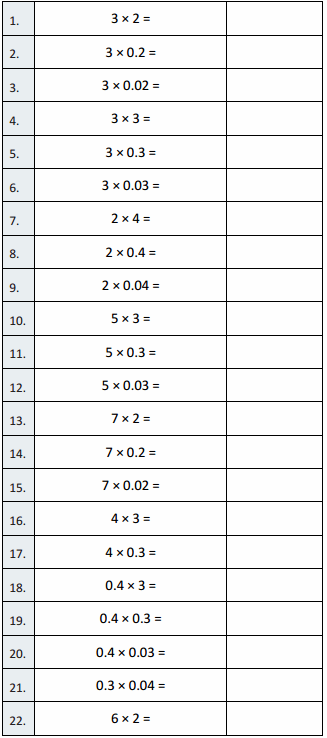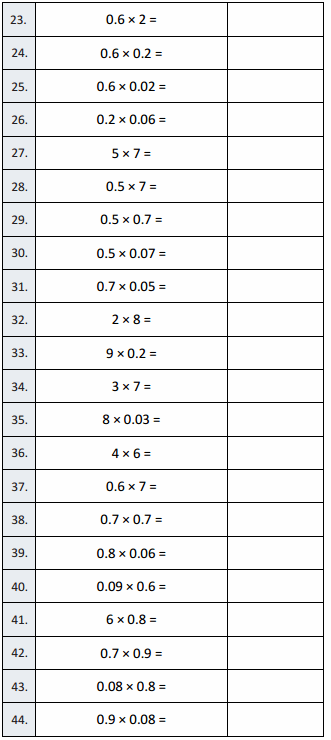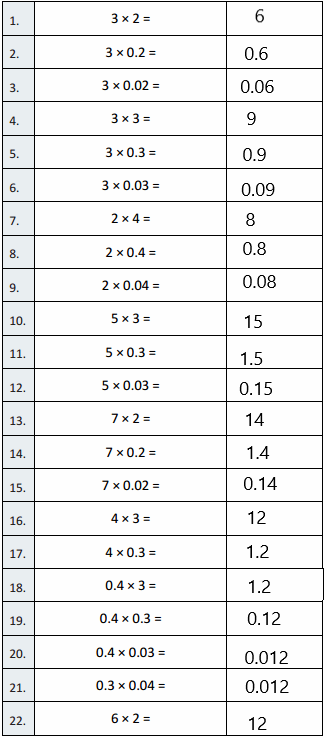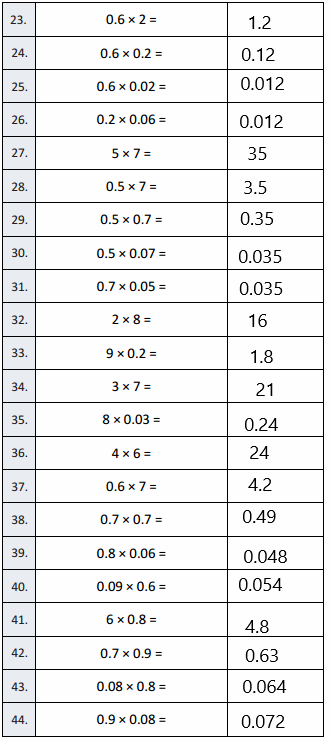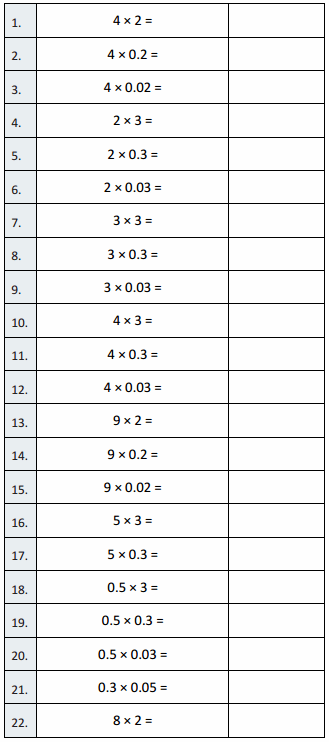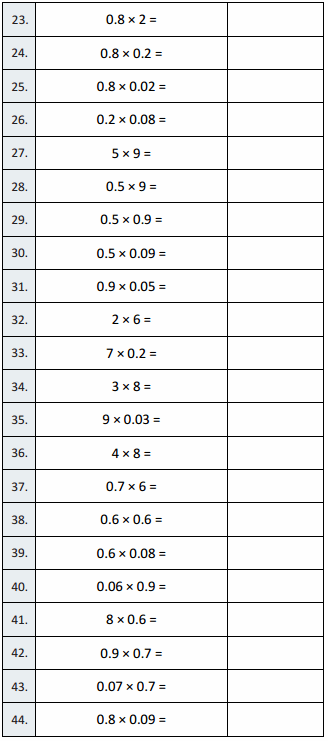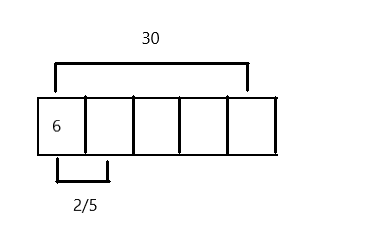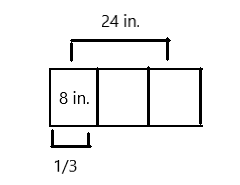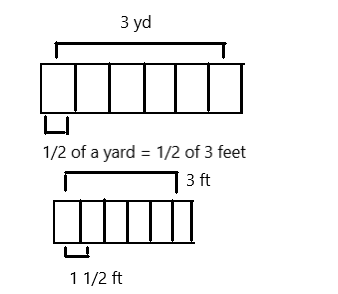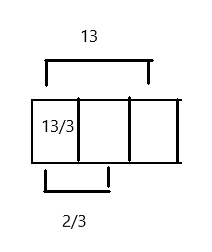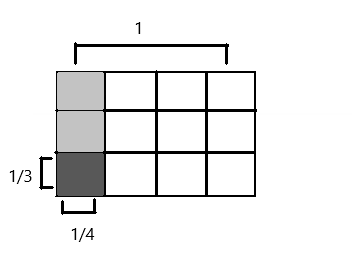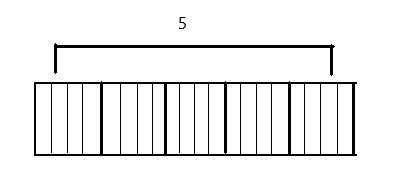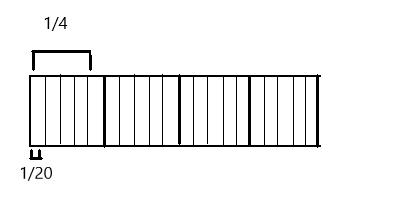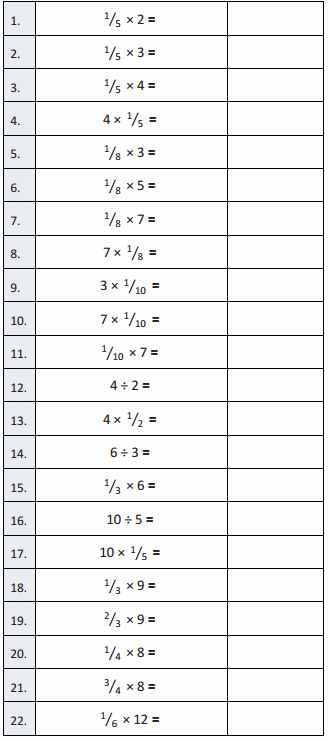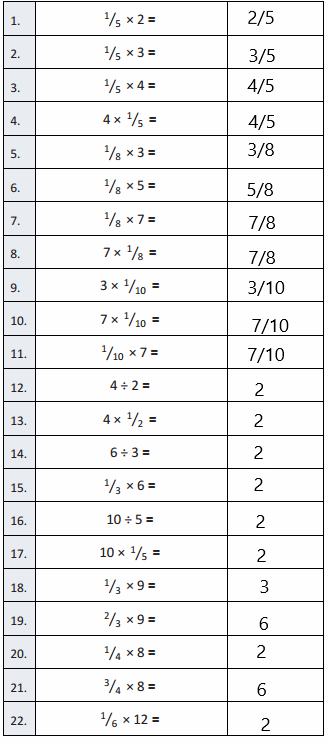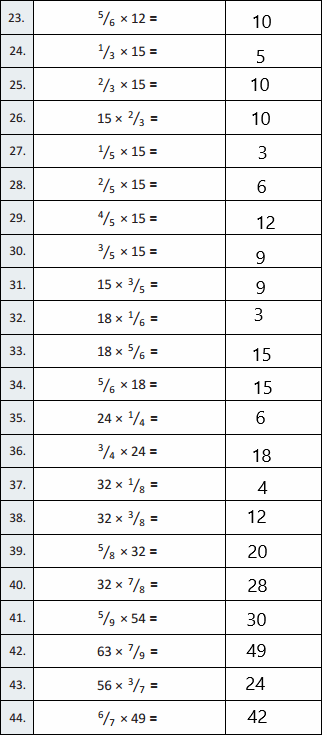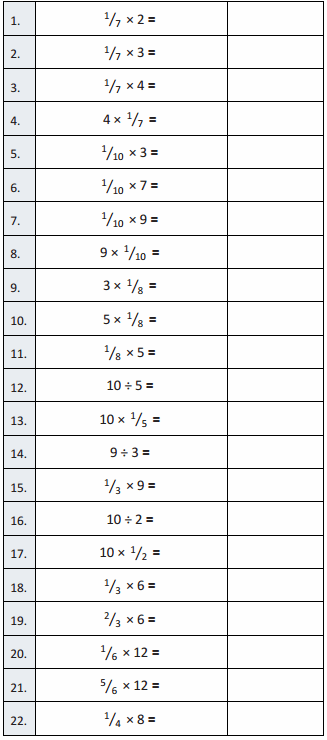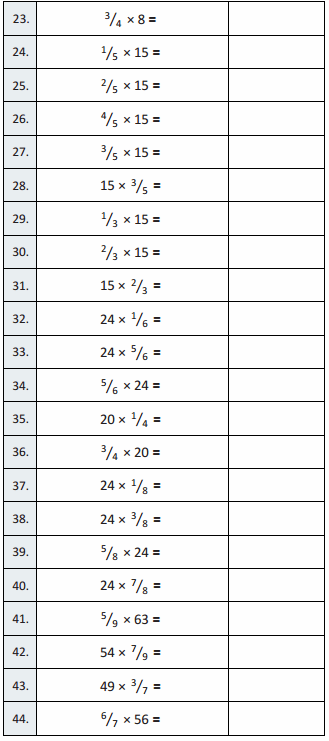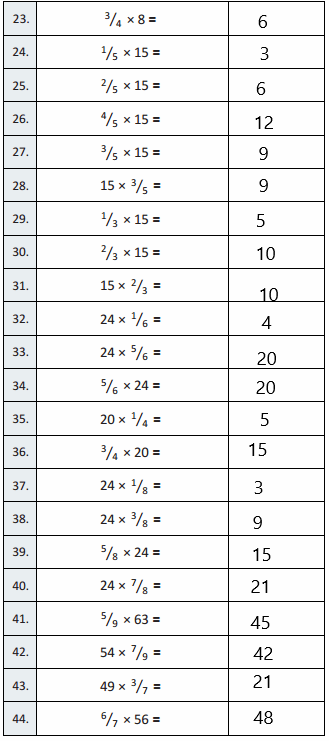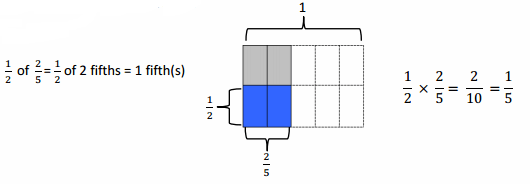Engage NY Eureka Math 5th Grade Module 4 Lesson 5 Answer Key
Question 1.
A total of 2 yards of fabric is used to make 5 identical pillows. How much fabric is used for each pillow?
Answer:
2/5 yard of fabric
Explanation:
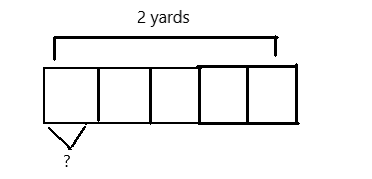
5 units = 2 yards
1 unit = 2/5 yard
Hence each pillow uses 2/5 yard of fabric
Question 2.
An ice cream shop uses 4 pints of ice cream to make 6 sundaes. How many pints of ice cream are used for each sundae?
Answer:
4/6 or 2/3 pint of ice cream is used
Explanation:
6 units = 4 pints
1 unit = 4/6 pint or 2/3 pint. Hence 4/6 or 2/3 pint of ice cream is used in each sundae.
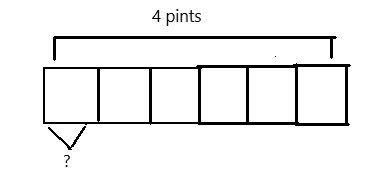
Question 3.
An ice cream shop uses 6 bananas to make 4 identical sundaes. How many bananas are used in each sundae? Use a tape diagram to show your work.
Answer:
6/4 or 1 1/2 bananas.
Explanation:
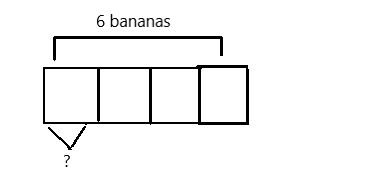
4 units = 6 bananas
1 unit = 6 ÷ 4
= 6/4 bananas
= 1 1/2 bananas
Question 4.
Julian has to read 4 articles for school. He has 8 nights to read them. He decides to read the same number of articles each night.
a. How many articles will he have to read per night?
Answer:
4/8 or 1/2 of an article each night.
Explanation:
8 units = 4 articles
1 unit = 4÷8
= 4/8 article
= 1/2 article
Hence julian must read 4/8 or 1/2 of an article each night.
b. What fraction of the reading assignment will he read each night?
Answer:
1/8
Explanation:
As julian is reading for each of 8 nights he reads 1/8 of his total assignment each night.
Question 5.
40 students shared 5 pizzas equally. How much pizza will each student receive? What fraction of the pizza did each student receive?
Answer:
5/40
Explanation:
40 units = 5 pizzas
1 unit = 5/40 pizza
Therefore each student gets 5/40 of 1 pizza.
Question 6.
Lillian had 2 two-liter bottles of soda, which she distributed equally between 10 glasses.
a. How much soda was in each glass? Express your answer as a fraction of a liter.
Answer:
4/10 liters of soda.
Explanation:
10 units = 4 liters
1 unit = 4 ÷ 10 liters
= 4/10 liters
Hence each glass will have 4/10 liter of soda.
b. Express your answer as a decimal number of liters.
Answer:
4/10 = 4 tenths = 0.4
Explanation:
Each glass will have 0.4 liter of soda.
c. Express your answer as a whole number of milliliters.
Answer:
400 ml of soda
Explanation:
1 liter = 1000 ml
0.4 * 1000 = 400
0.4 l = 400 ml
Hence each glass will have 400 ml of soda.
Question 7.
The Calef family likes to paddle along the Susquehanna River.
a. They paddled the same distance each day over the course of 3 days, traveling a total of 14 miles. How many miles did they travel each day? Show your thinking in a tape diagram.
Answer:
4 2/3 miles each day.
Explanation:
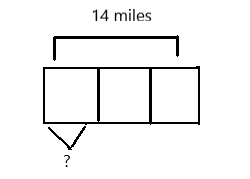
3 units = 14 miles
1 unit = 14 ÷ 3
= 14/3 miles
= 4 2/3 miles
Therefor, the calef’s travel 4 2/3 miles each day.
b. If the Calefs went half their daily distance each day but extended their trip to twice as many days, how far would they travel?
Answer:
14 miles
Explanation:
Half the distance
4 2/3
|
2 1/3 2 1/3
Twice as many days: Distance traveled
3 days * 2 = 6 days = 6 days at 2 1/3 miles
= 6 * 21/3
= 2 1/3 + 2 1/3 + 2 1/3 + 2 1/3 + 2 1/3 +2 1/3
=12 6/3
= 12 +2
= 14
Hence the calf family would still travel 14 miles.
Eureka Math Grade 5 Module 4 Lesson 5 Exit Ticket Answer Key
A grasshopper covered a distance of 5 yards in 9 equal hops. How many yards did the grasshopper travel on each hop?
a. Draw a picture to support your work.
Answer:
9/5 = 1 4/5 yards
Explanation:
5 yards = 9 hops
1 yard = 9/5
= 1 4/5 yard
b. How many yards did the grasshopper travel after hopping twice?
Answer:
2/5 yards
Explanation:
5 yards = 2 hops
= 2/5 yards
Eureka Math Grade 5 Module 4 Lesson 5 Homework Answer Key
Question 1.
When someone donated 14 gallons of paint to Rosendale Elementary School, the fifth grade decided to use it to paint murals. They split the gallons equally among the four classes.
a. How much paint did each class have to paint their mural?
Answer:
3 1/2 gallons for each class
Explanation:
14 gallons ÷ 4 classes
14/4
3 2/4
3 1/2 gal for each class
b. How much paint will three classes use? Show your thinking using words, numbers, or pictures.
Answer:
10 1/2 gallons
Explanation:
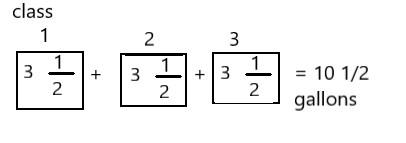
c. If 4 students share a 30-square-foot wall equally, how many square feet of the wall will be painted by each student?
Answer:
7 1/2 sq ft
Explanation:
30 sq ft ÷ 4 students
30 / 4= 7 2/4 = 7 1/2 sq ft
d. What fraction of the wall will each student paint?
Answer:
7.5/30
Question 2.
Craig bought a 3-foot-long baguette and then made 4 equally sized sandwiches with it.
a. What portion of the baguette was used for each sandwich? Draw a visual model to help you solve this problem.
Answer:
3/4 ft for each sandwich
Explanation:
3 feet ÷ 4 sandwiches
Hence 3/4 ft for each sandwich
b. How long, in feet, is one of Craig’s sandwiches?
Answer:
3/4 ft or 0.75 feet
c. How many inches long is one of Craig’s sandwiches?
Answer:
3/4 = 9 inches
Question 3.
Scott has 6 days to save enough money for a $45 concert ticket. If he saves the same amount each day, what is the minimum amount he must save each day in order to reach his goal? Express your answer in dollars.
Answer:
$7.50 each day
Explanation:
$45 ÷ 6 days = 45/6
= 7 3/6
= 7 1/2 each day
